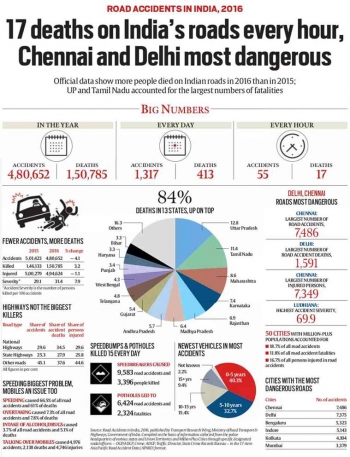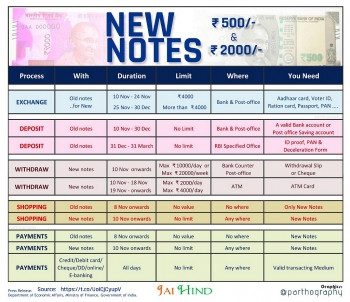11/06/2017
Baby Samurai goes to school
What an ordeal, sending your baby (yes baby) to school in Indian megacities...
 Since my son crossed the fateful (it seems) 15 months threshold, the first question I am asked is: “so, he is going to school?” That said, I have a feeling that this obsession with schooling is specific to the people of my residential society, because I was actually told, by the founder of a crèche chain, that in India parents are reluctant to send their children to school before 3 years. During these first years, the child is considered as an extension of his parents, a small animal that needs to be fed, changed and put to sleep – it covers his primary needs without caring for his or her own personality, nor any concern about his/her ‘development’. I must say that with extended families, kids naturally ‘socialise’, hence it is a non-issue. This lady has met is on a mission: explaining to Indian parents (especially those who are working and those who live in smaller families) the concepts of socialization etc. Apparently his sermon reached very well the ears of my neighbours, since all these rich people, exposed to Western culture, look at you like a monster if you don’t put your little one in school very early.
Since my son crossed the fateful (it seems) 15 months threshold, the first question I am asked is: “so, he is going to school?” That said, I have a feeling that this obsession with schooling is specific to the people of my residential society, because I was actually told, by the founder of a crèche chain, that in India parents are reluctant to send their children to school before 3 years. During these first years, the child is considered as an extension of his parents, a small animal that needs to be fed, changed and put to sleep – it covers his primary needs without caring for his or her own personality, nor any concern about his/her ‘development’. I must say that with extended families, kids naturally ‘socialise’, hence it is a non-issue. This lady has met is on a mission: explaining to Indian parents (especially those who are working and those who live in smaller families) the concepts of socialization etc. Apparently his sermon reached very well the ears of my neighbours, since all these rich people, exposed to Western culture, look at you like a monster if you don’t put your little one in school very early.
Except that I decided to not let that deter me, and to think for myself, puting things in perspective. In France, for example, crèche is rarely a choice, but a requirement due to the professional activity of the parents and the unavailability of the grandparents who enjoy their retirement and are not willing to get back to full time parenting with a baby. From there, one can find benefits to crèches of course, but a child cannot play with other children until at least 2 years, or even more. Before that he builds his individuality and has no place for this kind of interaction with other humans of his age. I hadn't read anything beforehand, simply trusting to my intuitions, but literature quite agrees with my state of mind. And me, I have had a great nanny, a great house with a park equipped with children at the end of my garden, so I never saw the need to impose car rides (traffic jams) and early schooling to my boy. And monetary considerations were not even considered in this decision, but they could have, since a year in a ‘good’ crèche and/or pre-school costs almost minimum 2000 euros... So I took the risk of being perceived as a bad mother, what do I care?
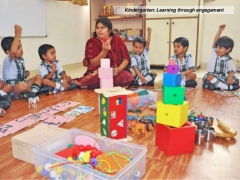 That said, I’m always open to suggestions and able to challenge myself enough, so I did try two local crèches which had a ‘mother-child’ program, when my son was 15 months. I also took my nanny along. After 3 hours, in both the centres, we left with a bad headache. I had expected playing and fun; I landed up in hell, one has no idea how noisy teachers can be. And they sing and they scream, activities one after the other at a crazy speed, not a moment’s inattention permitted to the children: don’t look away, ‘U for umbrella’. They disgusted me. And comforted me in my low opinion of Indian schools which give an exaggerated importance to the kids’ development and academic learning. My baby would have to wait 18 years before going to school! (Or at least 3 years ;) ).
That said, I’m always open to suggestions and able to challenge myself enough, so I did try two local crèches which had a ‘mother-child’ program, when my son was 15 months. I also took my nanny along. After 3 hours, in both the centres, we left with a bad headache. I had expected playing and fun; I landed up in hell, one has no idea how noisy teachers can be. And they sing and they scream, activities one after the other at a crazy speed, not a moment’s inattention permitted to the children: don’t look away, ‘U for umbrella’. They disgusted me. And comforted me in my low opinion of Indian schools which give an exaggerated importance to the kids’ development and academic learning. My baby would have to wait 18 years before going to school! (Or at least 3 years ;) ).
My neighbor, the one I would have liked to become friend with, that I looked up to as an example and to whom I had asked advice when we moved in, lost a lot of points for insisting so much that I put my son in one of these schools where her daughter goes, poor kid.
Except that. My nanny started acting funny. Knowing very well that it would be really tough to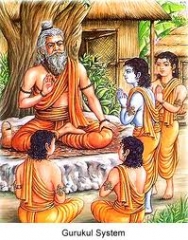 find a gem like her, I preferred to look for school options, earlier than I had planned. I selected 4. A Swedish one – but I had to cross it off my list because they don’t take children before 3 years and half (actually my son would be almost 4 and half before being admitted, as children need to be 30 months in April and not a week later), one between home and office and 2 Montessori schools. Montessori was recommended to me by a friend. But beware, in Gurgaon, almost all the schools are named ‘International Montessori Schools’ – even if they are very much Indian and adopt only a few Montessori concepts. Anyway, the site of the Montessori Foundation gave me the name of the only two schools accredited in Gurgaon (not one in Delhi!)..
find a gem like her, I preferred to look for school options, earlier than I had planned. I selected 4. A Swedish one – but I had to cross it off my list because they don’t take children before 3 years and half (actually my son would be almost 4 and half before being admitted, as children need to be 30 months in April and not a week later), one between home and office and 2 Montessori schools. Montessori was recommended to me by a friend. But beware, in Gurgaon, almost all the schools are named ‘International Montessori Schools’ – even if they are very much Indian and adopt only a few Montessori concepts. Anyway, the site of the Montessori Foundation gave me the name of the only two schools accredited in Gurgaon (not one in Delhi!)..
We were first to meet between a ‘normal’ school. For that, we had to take an appointment and visit outside the school hours, carrying a checkbook (the visit is not free and seats go fast, so if you like it, it is better to register on the spot, the secretary said) and a completely convoluted questionnaire – the question “kids love pleasing their parents; can you give us an example?” made me rack my brain, in vain, and after a few hours, my husband could come up with something... My child is amazing, but up till 2 (and even now, most of the time), he couldn’t give a dam about my well-being, let me be honest. And right after we had to go see the Montessori school which had answered my mail. I didn't like the name, ProductiveMinds, precisely because I was afraid of the pressure of the learning, but well, let us keep an open mind.
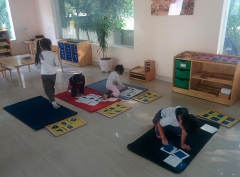 Our first meeting was cancelled. A missed act. And for a good reason! No sooner had I pushed the gate of the second school that I knew our quest would end there. Only one classroom, the children of all ages are all together. Each one does his own activities, in silence (no ‘master’ bellowing Jingle bells in the middle of July). A garden where kids can go to freely, with even a vegetable garden. No uniforms. And flexible pick and drop hours. Sold! And I am not even speaking about, ‘small’ bonus, the learning benefits of this education for children... This school makes me happy to live in Gurgaon, that says it all!
Our first meeting was cancelled. A missed act. And for a good reason! No sooner had I pushed the gate of the second school that I knew our quest would end there. Only one classroom, the children of all ages are all together. Each one does his own activities, in silence (no ‘master’ bellowing Jingle bells in the middle of July). A garden where kids can go to freely, with even a vegetable garden. No uniforms. And flexible pick and drop hours. Sold! And I am not even speaking about, ‘small’ bonus, the learning benefits of this education for children... This school makes me happy to live in Gurgaon, that says it all!
Since then, the nanny came to better feelings and Baby Samurai started school at 2 years and 9 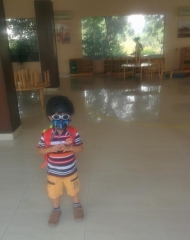 months. And everything went very well! I even got to stay a few days in the class to adapt smoothly (I mean, I got to adapt, not my son who got accustomed very quickly).
months. And everything went very well! I even got to stay a few days in the class to adapt smoothly (I mean, I got to adapt, not my son who got accustomed very quickly).
And this leaves me at least 2 years of respite, before having to dig into the selection of the next school, which is no easy task. For example, there are Indian and British curriculums. Then you must be selected and prepared to pay astronomical amounts. Education, like health, is a business in India. And not a very clean one, according to this study on corruption. And if you don’t believe me, please watch this movie, Hindi Medium, based on real events and which staged a rich family coming from a modest background who is denied entry to schools and thus pretends to be poor to integrate quotas. Super funny but frankly a little bit disturbing too...
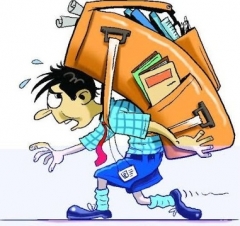 Because beyond the financial question, there is the pressure on the kids, this race to performance, where everyone has to be the best in class because they are millions (yes, millions, the whole middle and below classes who aspire to get out of the shit thanks to the education of their offspring) behind to get the first place – but what does it even mean first place? Happiness is being sacrificed to the altar of financial and social success. All this without neglecting the extra-curricular activities. I often wonder when do they sleep these kids? And when do they play? Or just spend time with their parents? I hardly ever see any of them at the park…
Because beyond the financial question, there is the pressure on the kids, this race to performance, where everyone has to be the best in class because they are millions (yes, millions, the whole middle and below classes who aspire to get out of the shit thanks to the education of their offspring) behind to get the first place – but what does it even mean first place? Happiness is being sacrificed to the altar of financial and social success. All this without neglecting the extra-curricular activities. I often wonder when do they sleep these kids? And when do they play? Or just spend time with their parents? I hardly ever see any of them at the park…
And then, there is also the whole problem of a lot of poor kids (84 millions as per the last census, in 2011) not having access to education for logistic or cost issues… Or to a not-so-good one…
08:00 Posted in Expatriation (in India and in other countries), Little Samourai, My stories in India | Permalink | Comments (0) | Tags: india, education, parenting, school, school system, hindi medium, corruption, montessori | ![]() Facebook | |
Facebook | |
10/16/2017
When Indians re-invent creativity...
I am often asked to describe Indians. Which is absolutely an impossible task. But there is a trait that I often forget and yet explains so much: that’s jugaad. Of course it is so unique that there is no English translation. But I would translate it by “the art of thinking out of the box and find solutions nobody would have thought of”. Indians are masters of this. Beside them, MacGyver is a debilitating Penguin.
Here are some examples to illustrate.
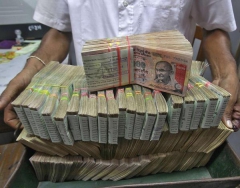 When Modi, the Prime Minister, launched his ‘demonetization’ at the end of 2016, he thought that at least 70% of people would not dare put their black money back in the bank and would rather destroy it, for fear of facing fines, public shaming etc.. He was wrong and had underestimated his compatriots who have found ways to deposit more than 99% of all the notes (source https://www.ft.com/content/7dbe0e14-8d8a-11e7-a352-e46f43c5825d). Including by distributing to the poor around them with incentives (deposit 250,000 rupees (the limit to not attract attention) for me and I will give you 10,000 kind of thing).
When Modi, the Prime Minister, launched his ‘demonetization’ at the end of 2016, he thought that at least 70% of people would not dare put their black money back in the bank and would rather destroy it, for fear of facing fines, public shaming etc.. He was wrong and had underestimated his compatriots who have found ways to deposit more than 99% of all the notes (source https://www.ft.com/content/7dbe0e14-8d8a-11e7-a352-e46f43c5825d). Including by distributing to the poor around them with incentives (deposit 250,000 rupees (the limit to not attract attention) for me and I will give you 10,000 kind of thing).
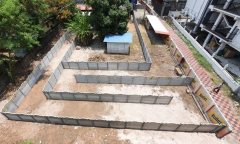 Another example: in December 2016, the Supreme Court delivered a judgment: they banned (Indian authorities have a knack for banning things) alcohol sales within a radius of 500 meters from a main road (national or local highway). This was the result of a 4 year campaign on road safety – ironically enough, the man who led it had been left crippled by a road accident, because his car had gone off-road in the hope of spotting a leopard and he tackled the problem of alcoholism on the road. There is definitely a problem in India, but alcohol remains the 3rd cause of accident after excess of speed and mobile phone.
Another example: in December 2016, the Supreme Court delivered a judgment: they banned (Indian authorities have a knack for banning things) alcohol sales within a radius of 500 meters from a main road (national or local highway). This was the result of a 4 year campaign on road safety – ironically enough, the man who led it had been left crippled by a road accident, because his car had gone off-road in the hope of spotting a leopard and he tackled the problem of alcoholism on the road. There is definitely a problem in India, but alcohol remains the 3rd cause of accident after excess of speed and mobile phone.
But let’s move on. The goal of the Supreme Court was to reduce drinking and driving. As a result: 80% of the restaurants in our area have put down the shutter, from one day to the other. But some ‘smart ones’ managed to divert the entrance to the restaurant; something like you have to drive twice around the block to be able to enter, thus covering the legal 500 metres! A weird rule though: 500 meters is not enough to sober up, as far as I know. Anyway on August 23rd, 2017, the Supreme Court relaxed their decision and lifred the ban within the cities, probably in the spirit of focusing on drunk truck drivers, who, surprisingly (or not), are not likely going to get drunk in “pubs” but rather from local dives serving plastic alchohol. Whether the judges were hit by logic or pressure related to the losses of the restaurants who have to shut down and the reduction of collected taxes on alcohol no one knows.
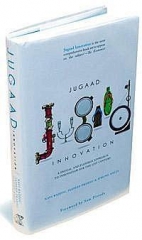 I sometimes face the challenge of explaining Jugaad to the Swiss... For whom the rule is the rule, even if the rule is stupid...
I sometimes face the challenge of explaining Jugaad to the Swiss... For whom the rule is the rule, even if the rule is stupid...
Source : http://www.indiatimes.com/news/meet-wheelchair-bound-harm... ; https://www.theguardian.com/world/2017/apr/25/alcohol-rul... ; http://economictimes.indiatimes.com/news/politics-and-nat... ; http://www.thehindubusinessline.com/opinion/measuring-impact-of-demonetisation-in-india/article9459507.ece
08:00 Posted in Incredible India! | Permalink | Comments (0) | Tags: india, jugaad, creativity, demonetisation, black money, corruption, alcohol, drinking and driving, rule | ![]() Facebook | |
Facebook | |
11/09/2016
Bye-bye 500 and 1000 rupee notes!
 While the world is watching, the other clown becoming president of the United States, the Indian Prime Minister continues with his hobby of banning things. After banning beef meat almost everywhere, porn sites etc., he created the surprise yesterday... by banning 500 and 1000 rupee notes. With immediate effect (well the announcement took place around 8 p.m. and took effect at midnight), it was orchestrated masterfully. Basically, it means that now you can pay cash only with bills of 100 rupees (a little less than €1.5). Knowing that the India is a ‘cash economy’ (almost everything is done in cash) it’s going to be a little tough to adjust.
While the world is watching, the other clown becoming president of the United States, the Indian Prime Minister continues with his hobby of banning things. After banning beef meat almost everywhere, porn sites etc., he created the surprise yesterday... by banning 500 and 1000 rupee notes. With immediate effect (well the announcement took place around 8 p.m. and took effect at midnight), it was orchestrated masterfully. Basically, it means that now you can pay cash only with bills of 100 rupees (a little less than €1.5). Knowing that the India is a ‘cash economy’ (almost everything is done in cash) it’s going to be a little tough to adjust.
The intention is laudable though: putting an end to the ‘black economy’, fake currency and corruption. This plan has the merit of being ambitious! Apparently, it was the third (surprise) phase of Modi’s strategy, the first one being to encourage everyone to open a bank account (since August 2014, 254.5 million accounts have been opened, half of them in the rural sector*) and the second one to encourage all those who have black money to come clean**. (In fact the plan had in 8 steps*, I just simplified.)
In any case, this is going to bring up some change!
Here are the next steps summed-up:
And in more details (for instance what can tourists or people living abroad and holding cash can do): RBI_ Your questions answered by the RBI _ What to do with 500 and 1000 notes.pdf - source.
* Source: http://indiatoday.intoday.in/story/prime-minister-modi-surgical-strike-on-black-money-government-currency-revamp/1/805904.html
** The black money holders were given a chance from June to September to come clean and declare their assets – and pay taxes on it, with a penalty of 45%. But less than a tenth of the estimated amounts of black money (7 000 billion rupees (about 6% of GDP)) have been disclosed.
08:27 Posted in Incredible India! | Permalink | Comments (0) | Tags: india, ban, fake currency, fake notes, corruption, black money, 100 rupee notes, 500 rupee notes, 1000 rupee notes | ![]() Facebook | |
Facebook | |















